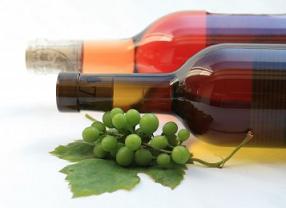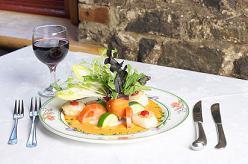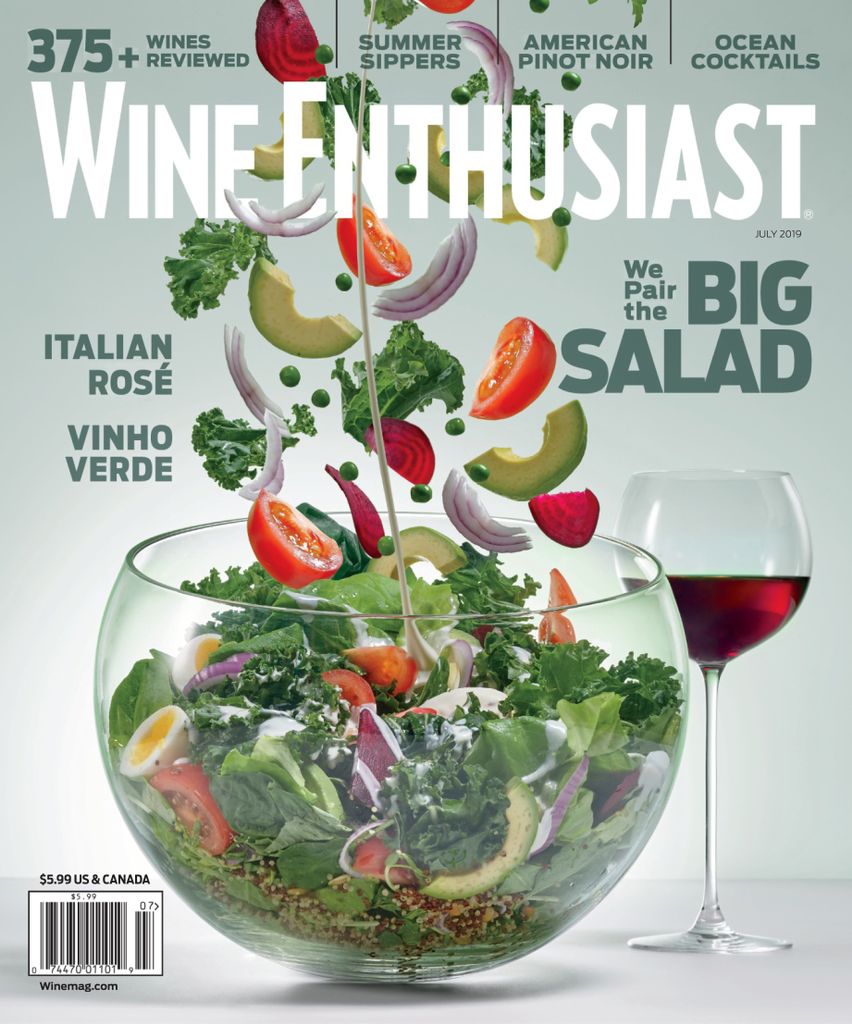Wine Basics:
The Beginner's Wine Guide
This page covers wine basics, to give you some basic wine knowledge to help choose the right bottle at the store, or decide what type of wine goes with what you're eating. So keep reading to learn more!
Have a burning question about wine?
Have you always wondered about the history of a certain type of wine? Or asked yourself what food is best with Chardonnay or Merlot? Share your question, and I'll give you my best answer. And others can chime in too!

This basic wine information includes answers to frequent questions such as:
- Which are the most popular types of wine?
- How should wine be stored and served?
- What food do you pair with what wine?
- How can I select the right wine?
What is Wine?
Wine is the fermented juice of wine grapes.
Sometimes grapes are fermented with the skin on, making red wine. Rosé, the blush-colored wine, is made by including the skin for just a very short time. Sometimes grapes are fermented without the skin, creating white wine.
Do you have other wine questions that you'd like to see answered on this site? Then just fill in the form below:
Have a burning question about wine?
Have you always wondered about the history of a certain type of wine? Or asked yourself what food is best with Chardonnay or Merlot? Share your question, and I'll give you my best answer. And others can chime in too!
Wine Basics: Making Wine
Wine is made by collecting and crushing wine grapes, of which there are a hundreds of different varieties.
Once the grapes have been crushed, the combination of the natural sugars in the grapes with the yeast (which is naturally on the grape skins, and may be supplemented by the wine maker) causes fermentation creating alcohol.
The wine maker can also choose how long to ferment and age the wine, and what types of barrels to use for the wine.
These and other choices can produce vastly different end results in the wine. This is why there is such an enormous variety of types of wine available.
Keep reading below to learn about the different types of wine.
Wine Basics: Types of Wine
There are thousands of different types of wine. Below is just a quick summary of some of the most popular wines today. For additional information take a look at this article which covers more about the different wine types. Red Wines are made from "black" (red-colored) grapes fermented with the skin. The skin is what imparts the red color to the wine. Red wines include:
- Cabernet Sauvignon
- Merlot
- Pinot Noir
- Zinfandel
- Chianti (from the Chianti region in Italy )
- Beaujolais (a French wine )
White Wines are from either "black" (red-colored) or "white" (green-colored) grapes, fermented without the skin. White wines include:
- Chardonnay
- Sauvignon Blanc
- Pinot Grigio
- Riesling
Rosé Wines are pink-colored, often medium-sweet, wines, although some rosés can also be very dry. They are usually made from black grapes, with the skin included for the just the first few hours of the fermentation process to impart a small amount of color to the wine. The sweeter rosés tend to be favorites of people who are new to wine, because they are often light and somewhat sweet.

Sparkling Wines include Champagne (from the Champagne region of France ) and other similar wines. They contain bubbles of carbon dioxide, which is a natural byproduct of the fermentation process.
Dessert Wines are very sweet, and intended to be drunk with or as a dessert course. Popular dessert wines are:
- Madeira
- Late-harvest Rieslings
- Ice wines
- Port
Fortified Wines, as their name implies, are wines with brandy or other spirits added during fermentation. Many are quite sweet, depending on when the spirits are added, since that ends the fermentation process. Fortified wines include:
- Sherry (dry, medium, or sweet)
- Port
Wine Basics: Storing Wine
Unopened wine bottles should ideally be stored on their sides (to stop the cork from drying out) at a temperature of 45-65 degrees away from bright light. Not all of us have the luxury of having a wine cellar, so a basement or cool closet would be ideal. It's best not to keep wine for longer than a few days in the fridge, and definitely not on a warm kitchen counter or shelf near the stove.
Once a bottle of wine has been opened, it will not keep longer than a couple of days (with the exception of some sweet fortified wines like Madeira which can keep for months). It is best to keep opened wine in the fridge, replacing the cork in the bottle or ideally decanting the wine into a smaller bottle to reduce the amount of air coming into contact with the wine.
How to Serve Wine

Here are just a few of the serving wine basics:
- Pair your wine with your food – typically, red wines are served with red meat and robust pasta dishes, while white wines are the best choice for poultry and fish.
- Serve white and rosé wines chilled – put the wine in the fridge before serving.
- Serve red wines at or slightly below room temperature.
- Let the wine “breathe” – especially for red wines, it is a good idea to open the bottle a little while before you plan on drinking it, or decant the wine into a carafe.
- Select the appropriate wine glass for the type of wine you are serving: red, white (or rosé), or sparkling.
Selecting Wine Basics
Even for those who know more than the wine basics, it can be a real challenge to choose between the thousands of types of wines available. How do you select the best wine for your needs, given your taste preferences and budget?
The first challenge is recognizing the names of wines. Most "New World" wines (from the Americas like California wines, Australia, etc) are named for the grape variety (eg, Chardonnay). But most "Old World" or European wines are named from the region where the grapes were grown (eg, Chablis, which is a French wine made with Chardonnay grapes, or Chianti which is an Italian wine ).
When selecting wines, keep in mind this basic wine information described here. Consider the food you are pairing the wine with, your personal preferences (keep tasting notes), and of course your budget (try to stay away from the lowest-priced wines on the shelf, unless they are to be used exclusively for cooking). It is also perfectly OK to ask the wine store manager or restaurant sommelier for a recommendation, given your food selection – even knowledgeable wine drinkers will often ask for input from an expert.
Hopefully you have found this beginner's wine guide to be a useful summary of wine basics. For more on wine, please peruse the rest of our website and come back often as we continue to add to the site.
Sign up for the Wine Enthusiast magazine to learn more about how to drink wine, pair with food, and the history of wine culture.

